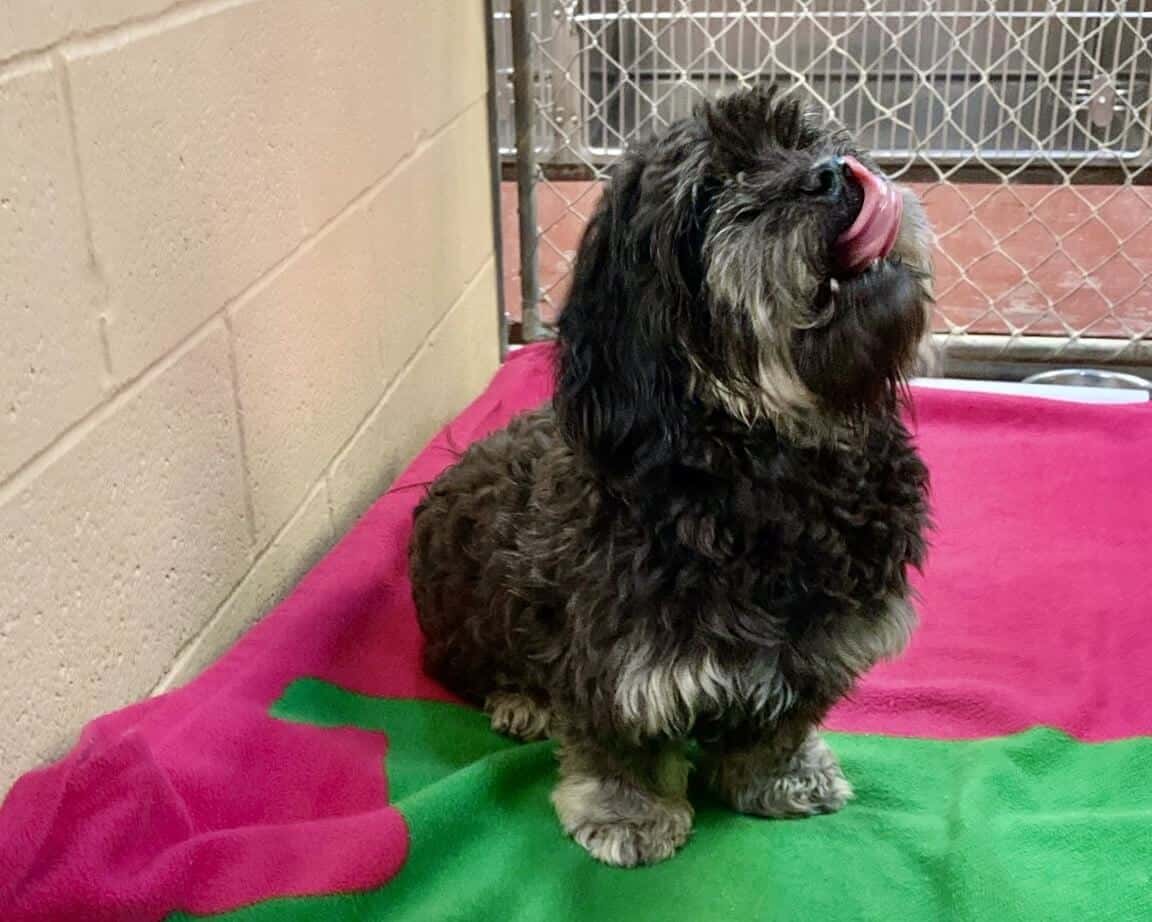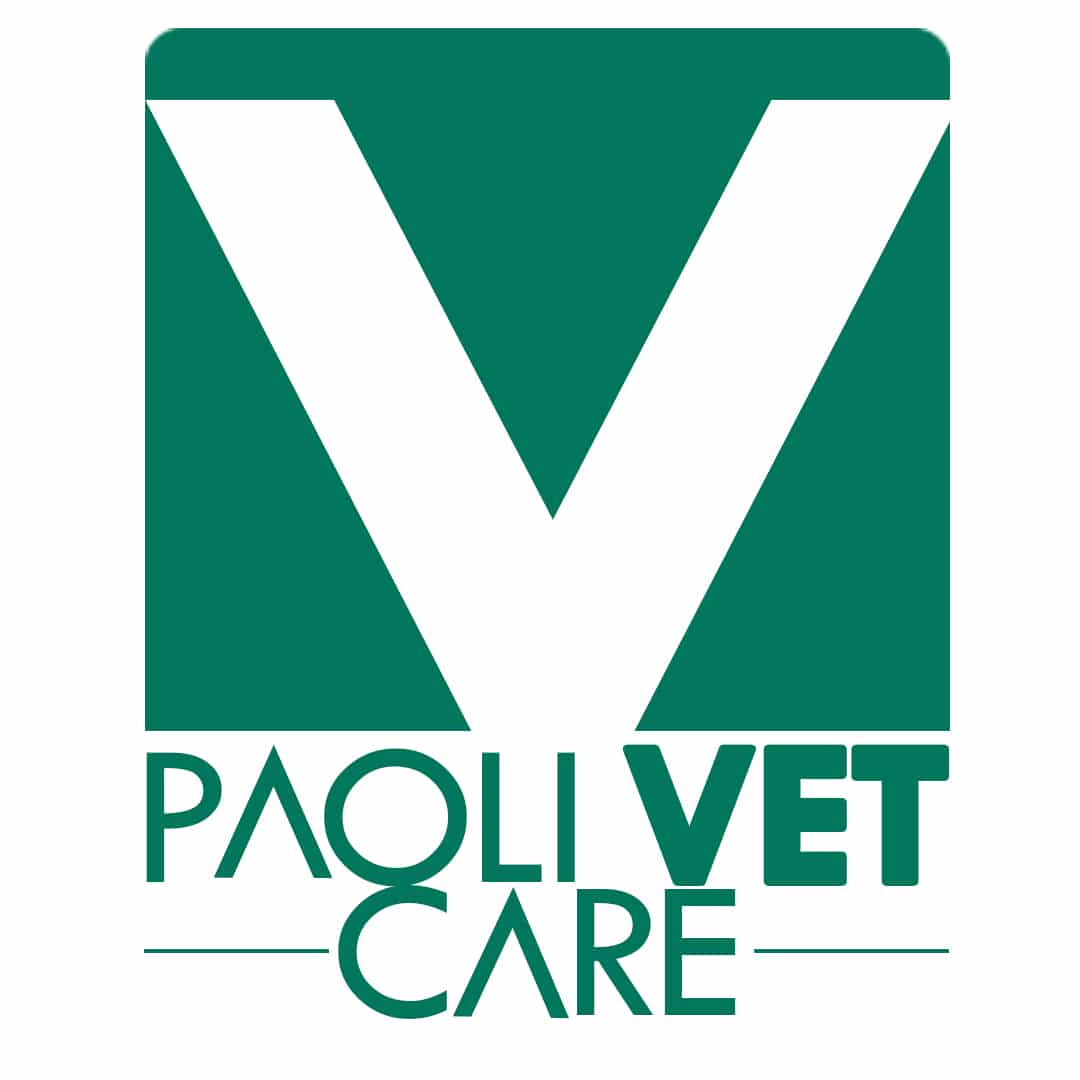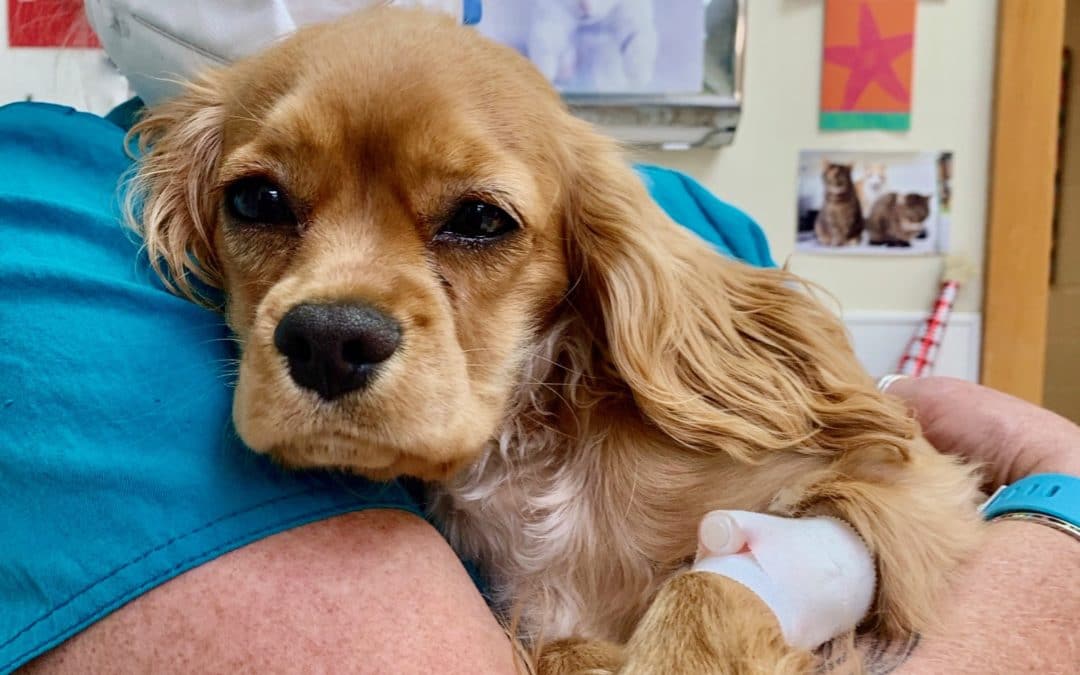There is a huge range in the possible neuter a dog — anywhere from $50 to $600 — it depends many factors, including your geographic location, the type of veterinary provider you choose, and whether or not you elect additional services like screening blood work, IV catheter, or pain medication.
A non-profit, subsidized low cost spay and neuter clinic is obviously less expensive than a privately-owned, fully-equipped AAHA-accredited animal hospital like Paoli Vetcare. the good news is that since spaying is a more complicated and time-consuming surgical procedure — all things being equal — neutering a male dog is always less expensive than spaying a female dog.
What’s It Cost To Neuter a Dog Near Me?
Table of Contents
- 1 What’s It Cost To Neuter a Dog Near Me?
- 2 What is Neutering?
- 3 Neuter vs. Spay vs. Fix: Is There Any Difference?
- 4 How Much Does It Cost To Neuter a Dog Near Me?
- 5 Factors Affecting Neutering Costs
- 6 What Are the Benefits of Neutering a Dog?
- 7 How Much Does It Cost to Neuter a Dog?
- 8 Regional Pricing for Neutering
- 9 Why Are Costs to Neuter Higher?
- 10 Standards: Veterinary Hospital vs. Low-Cost Clinic
- 11 Are there any financial assistance programs for dog neutering?
- 12 Conclusion
Neutering (castrating) a dog can cost anywhere from $30 to $500, depending on a wide array of factors including size and weight, health, bloodwork, medication, procedure location, financial need, and more.
What is Neutering?
Neutering, castrating, or “fixing” a male is the pet surgery in dogs or cats to remove the testicles (or balls). Although it’s a surgical form of birth control preventing unwanted pregnancies, it can also serve to prevent certain behavioral problems without decreasing your dog’s protective instincts.
The whole process lasts a few hours, and your pet is put under general anesthesia for the short surgical procedure so they won’t feel a thing. With any surgery, your pet will require a few days to fully recover, but most dogs act perfectly normal as soon as the anesthesia wears off. Keep reading to see the secret cost to neuter a dog revealed.
Neuter vs. Spay vs. Fix: Is There Any Difference?
If you’re a pet owner you’ve probably heard about spaying, neutering, and castration. What’s the difference between them, and is fixing just another word for this process? Paoli Vetcare is here to answer all your questions and put your mind at ease about the ins and outs of the process. There are many benefits of spaying/neutering your pet.
Many veterinarians refer to spaying and neutering as “fixing.” The core process is the same, with the result being the sterilization of your pet to prevent any unwanted pregnancies. Spaying and neutering is also healthy, as it can prevent certain diseases, health issues, and problems. Fixing your pet helps them lead a healthier life and is better for your household overall. The different terms really come down to gender: female pets can be fixed or spayed, while males are neutered. While the result is the same the procedure is different.
Neuter
Neutering is the surgical process by which your trusted veterinarian removes a male dog’s testicles through a simple incision on the front of the scrotum. It’s an easy and painless procedure, and neutering makes it essentially impossible for your dog to foster puppies. While they do need to be put under in order to complete the surgery, the process is very quick and you should be able to take your dog home that same day. Recovery takes only a few days, and your veterinarian will tell you what activity should be limited (typically running, climbing, swimming, etc.). After two weeks your pup should be fully healed like nothing happened!
Procedure
If you’re nervous about the neutering procedure, we break down the process so that both you and your pet feel safe and comfortable. The process can be wildly different depending on where you go, which is why it’s so important to take your pet to a Fear Free Certified Vet.
- General Anesthesia
These surgeries are very quick for cats, and a little longer for dogs. Your vet will use anesthesia no matter what to ensure the process is pain-free and that your pet remains unconscious.
- Preparation of the Surgical Site
For dogs, your vet will make an incision in the scrotum and remove both testicles through this incision. In cats, one incision is made over each testicle. Dogs will be shaved at the surgical site while cat hair typically plucked so the animal doesn’t get razor burn.
- The Vet Removes The Testicles
- The Incision Is Closed
- Your Pet Has Their Recovery Time
Your vet will remove each testicle, ensuring no bleeding occurs by ligating the spermatic cord. The scrotum might be removed for larger dogs to prevent any diseases from occurring, such as scrotal hematoma which can happen with dogs who are too active after the surgery.
In dogs, the incision will be sutured closed, whereas the cat’s inclusions are either left open or closed with glue, requiring no suture removal.
The surgery for male pets is less invasive than in females, and your pet will typically wake up from the anesthesia and be ready to go. The vet will closely monitor your pet for pain or any other issues until they’re fully recovered.
Cost
While the cost of a spay/neuter can vary based on a number of factors, typically your veterinarian will work with you to find something that works in your budget. Many veterinarians and humane society services have financial aid options for a dog’s surgery and will provide you with information upon request.
Final Result
There are a number of benefits that come with neutering your dog, including no unwanted pregnancies, helping to decrease the local pet population, various health and behavioral benefits of neutering your pet, and more. You shouldn’t have to worry about your dog fathering a surprise litter or bothering other pets that live on your block, and neutering your dog ensures that you can be part of the solution to pets having enough loving homes. Neutering your pet helps them with long-term medical issues, such as preventing uterine infections and reducing the chance of certain cancers. Plus, your neutered pet will have a reduced desire to roam around or look for females that are in heat.
Recovery Time
Neutering is far less invasive than spaying and has a much shorter recovery window with fewer chances for issues to arise. Your veterinarian will advise you on recovery time, though your pet should be completely back to normal within a few weeks.
Spay
Spaying is the sterilization surgery performed on a female dog, where your veterinarian will remove the ovaries and uterus so the dog cannot reproduce. By removing the reproductive organs in a female dog, also removes their innate desire to reproduce alongside ensuring they are sterile. This eliminates your pet’s ability to go into heat, and also reduces the chance for a number of health issues and illnesses to arise. Spaying your dog is good for them in the long term and will ensure they have a better life.
Procedure
The spaying operation requires full anesthesia, which your veterinarian will administer along with a breathing tube to help deliver oxygen to your pet’s lungs during the entire surgery. Your vet will make an incision in your pet’s abdomen just long enough to retrieve the reproductive organs. The ovaries and uterus are removed through this incision, and then the dog is sutured back up. Depending on the operation, the veterinarian might remove just the ovaries or uterus, or both. The procedure is not reversible.
Cost
The cost of an ovariectomy or ovariohysterectomy can depend on a number of factors, including the size of your dog and the use of medications, but your veterinarian will work with you to ensure that your budget will handle it. Most local veterinarians offer financial assistance as well.
Final Result
There are many benefits to spaying your dog, including eliminating unwanted pregnancies and reducing the risk of your pet acquiring certain diseases. Since spaying also prevents heat cycles, it has positive behavioral benefits such as reducing your dog’s desire to roam.
Unwanted pregnancy is risky for dogs and costly for you, not to mention adding even more dogs and puppies to local shelters. Pregnant dogs require veterinary care, which can be expensive. All Veterinarians recommend spaying female dogs unless the owner desires to breed them responsibly and attend to the care required. There are a number of diseases and illnesses that come with an intact uterus, such as ovarian cancer, uterine torsion, cystic changes, and other endocrine disorders. Between the health and behavioral considerations, it’s a good idea to spay your dog.
Recovery Time
There are a number of things you can do to reduce recovery time, including preparing your home for post-op care. Ensuring your dog makes a quick recovery is better for its overall health and less expensive for you. There are a number of things you can do, such as confining your dog to a quiet and comfortable space, ensuring they have easy access to food and water, limiting their exercise, and watching over them. A recovery kit typically includes clean bedding, relaxing toys, and regular administration of necessary medication.
Your pet might require a follow-up check, depending on her health and what sutures were used. Your veterinarian will need to remove the sutures at a different appointment—make sure you talk with your veterinarian about the best course of action for your dog.
Fix
“Fixing” is a common catch-all term for spaying and neutering, but it’s important to know what fixing actually means. This blanket term is often used to cover all sterilization procedures but looks quite different depending on the gender of your dog.
Spaying is the removal of a female dog’s reproductive organs, the uterus, and the ovaries. After a female dog has been spayed they cannot have puppies and won’t enter heat cycles. For male dogs, neutering or castration involves removing both testicles and their structures so the dog cannot reproduce. This will also inhibit the male dog’s heat cycles and make them less likely to roam looking for females.
How Much Does It Cost To Neuter a Dog Near Me?
Factors Affecting Neutering Costs
The total cost of a spay or neuter varies widely, depending on a number of factors and procedure types. The procedure could be free or could cost as much as $500 or more, depending on where you go—spaying and neutering also carry different costs as they are different procedures. Private practice veterinarians might be more expensive than clinics, nonprofits, or rescue centers, but will offer a heightened sense of security and personal care. Before agreeing to the procedure you should always ask what’s included in the quoted cost and if it’s possible for you to receive financial assistance.
Dog Size and Breed
Your pet’s size and breed will impact the cost of any spay or neuter procedure. Most veterinarians will quote you very different rates depending on the weight of the animal, as this must be factored into anesthesia and medication. Anything that might complicate the procedure will incur its own additional fees, such as a dog’s physicality and anything else that might complicate the surgery. Your county or state might have breed-specific programs that will help reduce or cover the cost of the procedure.
Veterinary Clinic Location
Additional Services Included
What Are the Benefits of Neutering a Dog?
There are many benefits to dog neutering, especially for your dog’s long-term health. While neutering prevents reproduction, it also reduces the chances of various health risks such as prostate infections, anal tumors, roaming resulting in hit-by-car accidents, dog fight injuries, and testicular cancers.
Neutering can also have positive benefits on your dog’s personality. Without the reproductive organs, your dog will not have high levels of testosterone, which means decreased restlessness, “humping,” escaping/bolting, and certain types of aggression (inter-dog aggression a.k.a. fighting).
Since neutering is a foolproof method of birth control, it helps reduce the homeless dog population, thereby giving the pets that end up at animal shelters a better chance for adoption.
How Much Does It Cost to Neuter a Dog?
The cost to neuter a dog depends on several aspects such as what breed dog you have, your dog’s age and health condition, where you live, and where you decide to go for the procedure. As a rough guideline, you can generally expect to pay about $300 for a basic, “no-frills” neuter surgery.
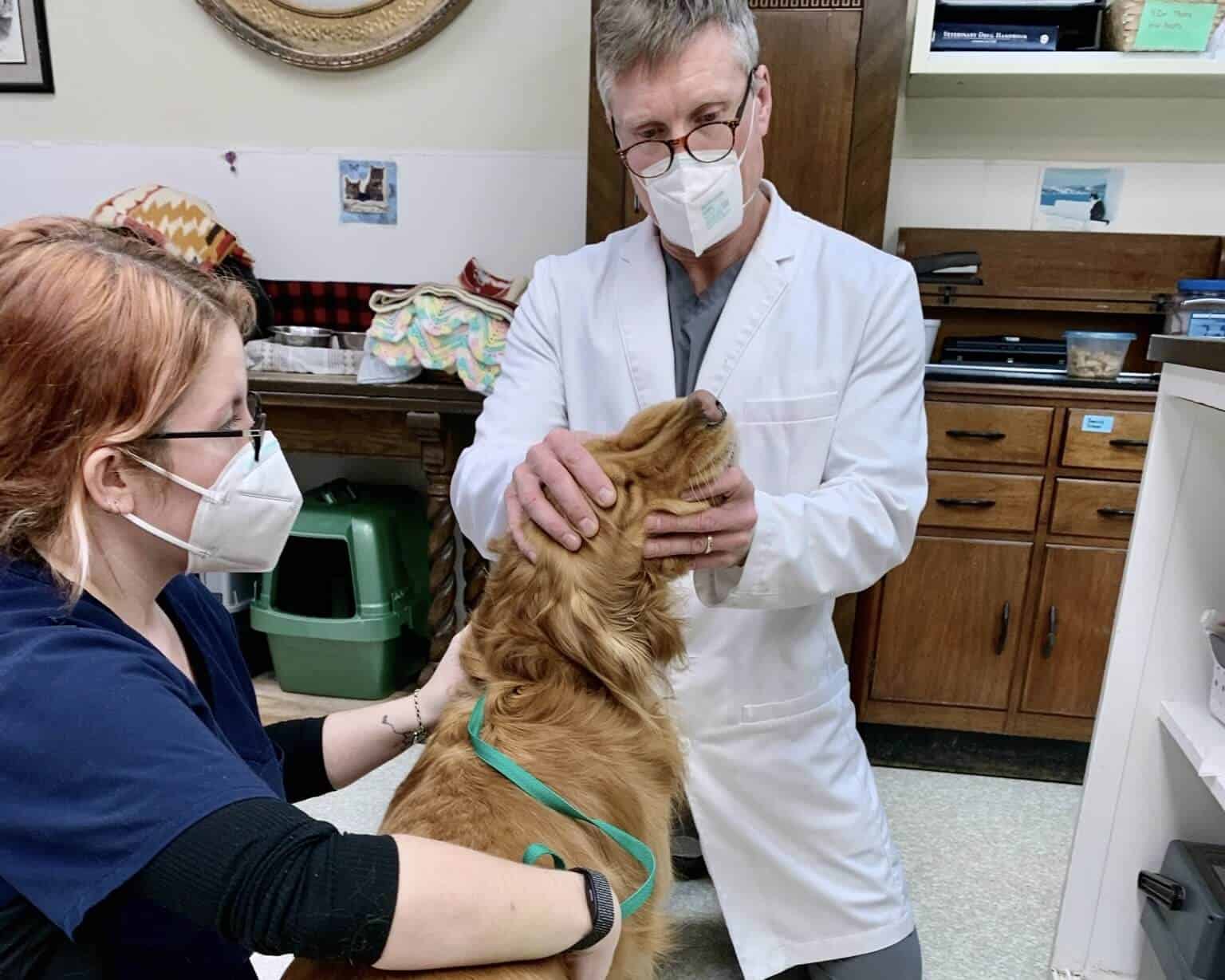
Regional Pricing for Neutering
Where you live plays a role in the cost to neuter a dog and the difference from region to region can be substantial. For example, a basic neutering package in major metropolitan areas such as Houston and Chicago starts at $325, whereas in New York City, it starts at $390.
In general, prices in these urban areas are higher than those in rural communities. With that said, a myriad of factors affect the cost and the location of your hometown is only one of them.
Prices from Local Delaware Valley Consumer’s Checkbook (2022):
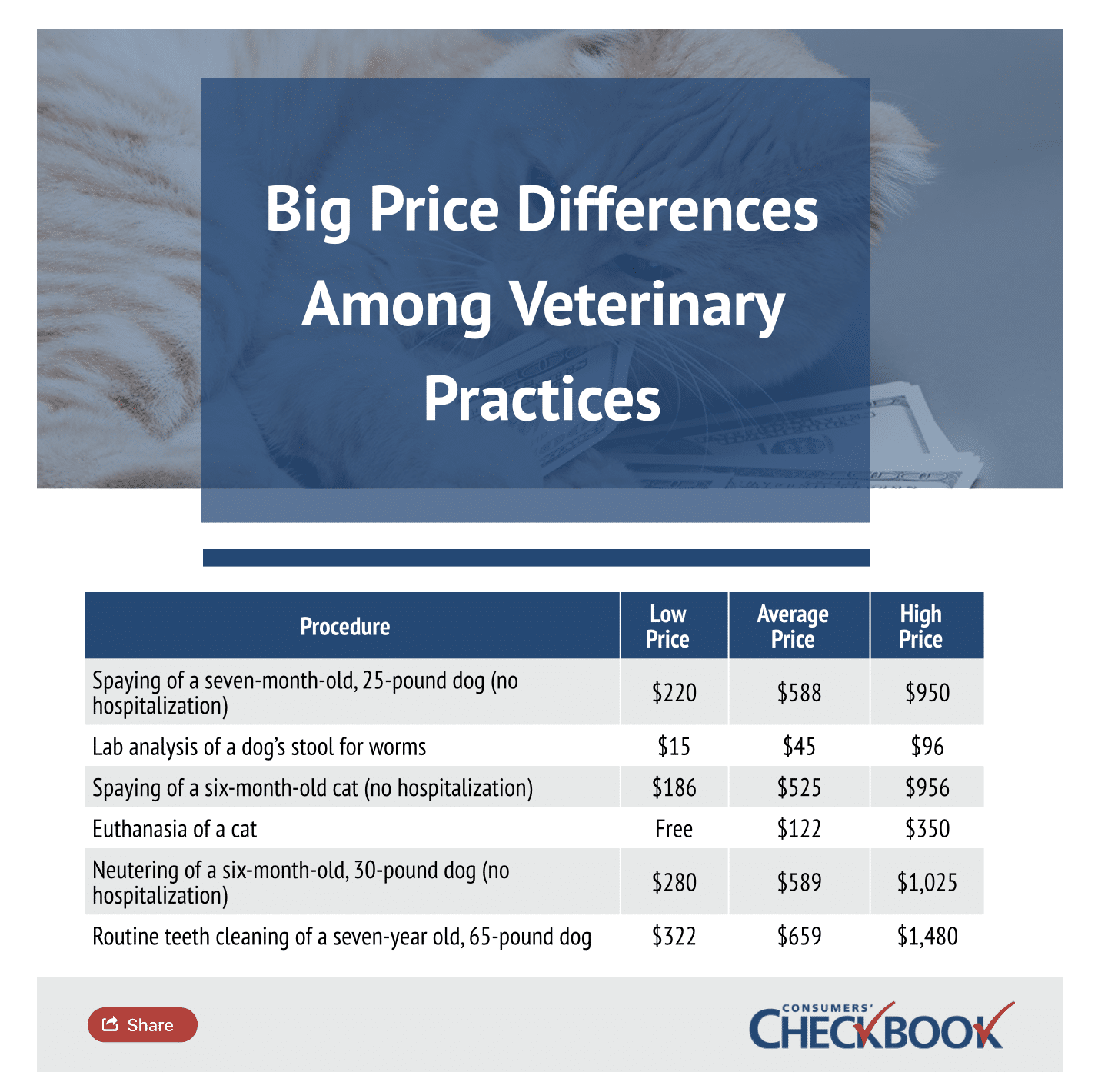
Why Are Costs to Neuter Higher?
Although the range in pricing is large, their are good reasons for different cost to neuter a dog — it’s not just random. Many variables must be taken into consideration when it comes to the total cost for a neuter surgery.
Larger, heavier, and older dogs require more anesthesia and surgical time for the operation, which may raise your bill.
Prior medical conditions usually require additional testing and bloodwork to operate safely, increasing the cost to neuter a dog. People choose to do screening blood work on apparently healthy dogs to detect previously unknown underlying conditions or to establish a baseline for later comparison.
Some vets will ask you to choose if you want them to place an IV catheter for additional safety during anesthesia and surgery, while other veterinarians will require catheter placement which adds to the cost to neuter a dog.
The cost to neuter a dog is always higher if your pup is cryptorchid — the relatively common preexisting condition of one or two of the testicles fail to descend normally into the scrotum. This condition requires more complex and invasive surgery, increasing the fee for the procedure.
Standards: Veterinary Hospital vs. Low-Cost Clinic
It’s a personal choice when deciding between a vet hospital and a spay and neuter clinic that depends on both your financial situation and your level of comfort with the particular facility you are considering for the surgery. The lower the cost to neuter a dog is clearly the biggest advantage to choosing a non-profit, subsidized clinic and — if you do your research — your dog should get adequate care.
Low-cost vet clinics do high volumes of spay and neuter surgeries (30 – 50 per day!) so the vets are generally experienced having done large numbers of these particular procedures. Always check that the veterinarian who will be doing your pet’s surgery has had at least a year of surgical experience or — if a new vet school graduate — is supervised by an experienced surgeon.
While nonprofit and corporate spay and neuter clinics have recently boomed because of their low prices, a cheaper cost to neuter a dog doesn’t necessarily mean it’s the best choice for you.
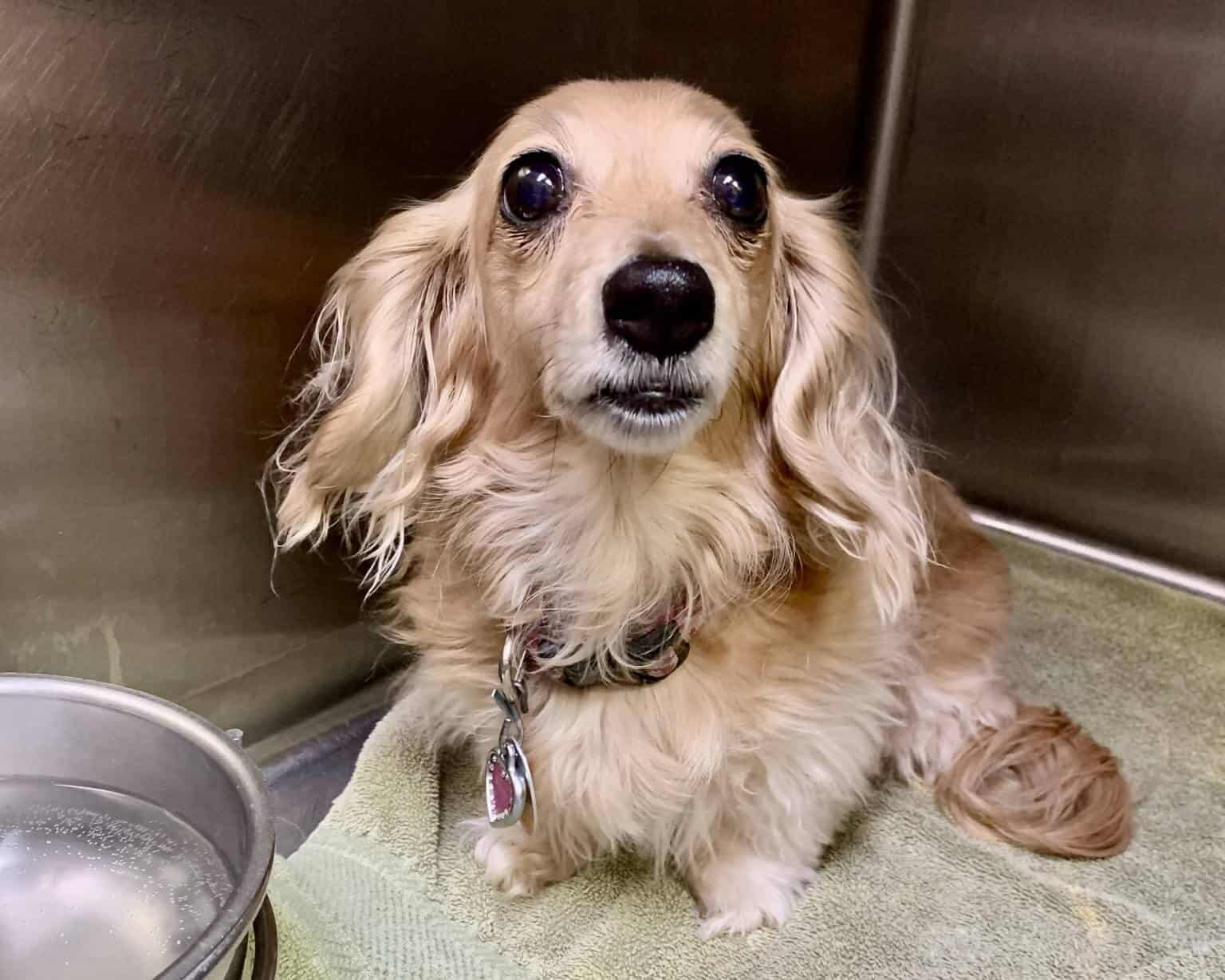
Why Choose a Veterinary Hospital?
Using a “regular” vet to get your dog neutered generally means a higher cost to neuter a dog. However, this higher price isn’t for nothing.
When you take your dog to the vet for this procedure, you’re also paying for an IV catheter, high-quality anesthetic, intravenous fluids, antibiotic and pain medications, anesthesia monitoring equipment, dedicated nursing care for anesthesia recovery, and your dog may need a cone or protective collar after the procedure to keep from scratching at the sutures. These items don’t just mean the procedure will cost more — it means that your dog will be in a safer environment.
When it comes to choosing a vet to get your dog neutered, the safest option should be chosen. The vet will conduct the procedure with all of the high-quality amenities necessary to keep your dog properly stabilized.
Why Use a Low-Cost Clinic?
While low cost to neuter a dog doesn’t always mean low-quality, the experience is different when compared to an AAHA-accredited animal hospital like Paoli Vetcare.
Low-cost clinics rely on grants and contributions to obtain the trained veterinary staff and equipment necessary for surgical procedures, so they often don’t have the same high-quality anesthetic, pain medications, and monitoring systems as a full-service vet would:
- Low-cost clinics don’t provide a consultation with a vet who performs a thorough physical exam for your pet before surgery.
- Low-cost clinics usually don’t offer or require blood work before surgery
- Low-cost clinics usually don’t offer or require the placement of an IV catheter or give intravenous fluids to your dog during the procedure
- Low-cost clinics do not have the staff to provide individual attention and monitoring of your pet before, during, and after surgery
- Low-cost clinics don’t monitor ECG, blood pressure, and maintain constant body temperature for your pet during the neuter surgery
- Low-cost clinics are not the best option for higher-risk patients:
- Giant breed dogs
- Older pets
- Overweight and obese dogs
- Brachycephalic breeds — flat, smushed faces
- In-heat or pregnant female dogs
- Aggressive dogs
- Pre-existing medical conditions
It’s been reported that there is a correlation between low-cost clinics and post-surgery complications. While this isn’t the case with all clinics, it is a variable to consider when choosing a clinic for the procedure — so always do your research and check reviews.
Low-cost spay and neuter clinics are not usually set up to handle emergencies or hospitalize pets overnight if there are complications. They may not have the ability to handle anything outside of a normal, healthy patient surgery and recovery. If a vet hospital is prepared for these contingencies, the cost will necessarily be higher.
Low-cost spay and neuter clinics can be a good option for young, healthy, low risk dogs and for those who can’t afford the cost of a full-service veterinary hospital. They deserve to be recognized for the necessary and important work they do to help solve the tragic pet overpopulation problem.
Using a low-cost clinic may be your best choice — just recognize there are common sense reasons why one surgery is $50 and another is $500.
For a full-service animal hospital, it costs a lot of money to purchase and maintain veterinary equipment, to hire and train skilled staff to work that equipment, run blood work, and monitor your pet. The practice owner must purchase and run a full-service veterinary hospital and pay veterinarians who perform surgery, supervise anesthesia, monitor recovery, as well as recognize and respond to any complications.
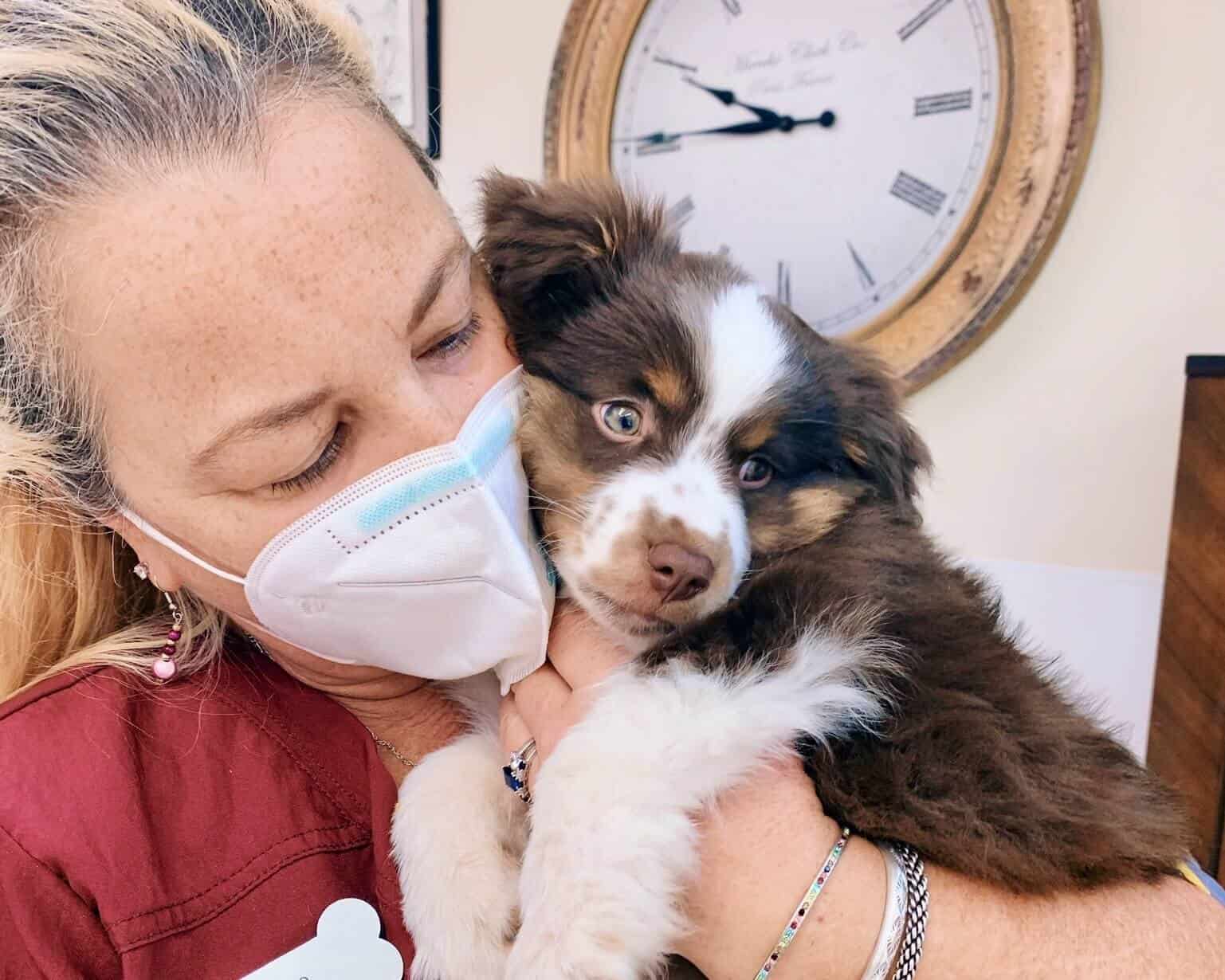
Are there any financial assistance programs for dog neutering?
Now that you’ve learned how many factors are at play, you can understand the necessity of meeting with one of our veterinarians to get a free estimate of the cost to neuter a dog prior to surgery.
New client exams are always complimentary at Paoli Vetcare, so your dog can get a thorough physical exam and an individualized surgical estimate at no cost to you. Check out our Free New Client Exam page to learn more and our Client Reviews page to see why so many choose Nextdoor Neighborhood Favorite Paoli Vetcare for their furry family member’s care.
Conclusion
Spaying and neutering your pet can help protect them against certain illnesses and diseases, it can address certain behaviors, can save you money, and will prevent any unwanted pregnancies. If you are considering the procedure, contact your local veterinarian to discuss and schedule your pet’s appointment. It’s an important procedure, and it’s a good idea to encourage your friends and family who own pets to do the same.
Your community should always have access to affordable and accessible spay/neuter procedures and wellness services, and if they don’t it’s important to advocate for them. All pet owners should have local access to quality medical care, which is why Paoli Vetcare has spent decades providing exceptional services and raising awareness about the importance of spay/neuter procedures.
Once you’ve decided to get your dog neutered and want an estimate, call or schedule your free first exam appointment online with Paoli Vetcare. You can rest easy knowing that Paoli Vetcare offers a modern, fully equipped, high-quality surgical suite along with expert pet professionals to provide the highest quality of care.
